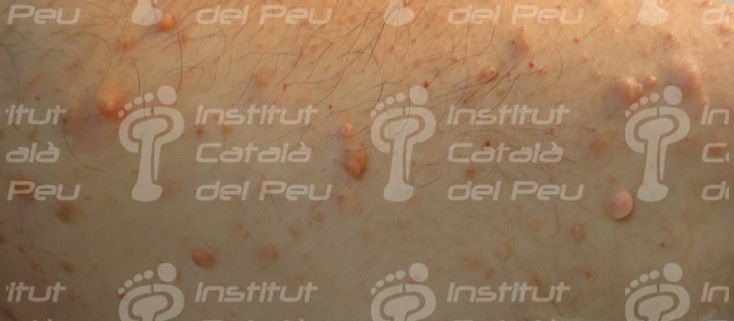DESCRIPTION OF TUBEROSE SCLEROSIS
The cutaneous symptomatology has white skin zones, brown macular lesions, thick skin, no traumatic unguinal or periunguinal fibromas, not cancerous tumors and facial angiofibromas. In the brain it may appear epileptic crisis due to cortical tuberosities, hydrocephaly by the growth of giant cells, intellectual disability and behavior disorders.
In some cases, the tuberose sclerosis has its origin through spasms or hypochromic spots, during growth through facial angiofibromas and epilepsy as well as during adult age by visceral alteration.
In the foot usually appears unguinal fibromas which they are meaty tumors around or under the nails.
Tests about this disease have analytics from TSC1 and TSC2 genes (majority of them responsible of this disease), computerized tomography and magnetic resonance of head as well as an echographia of the kidney. With these analytics it can be checked so common signs like calcium deposits, benign tuberosities and tumors in the brain, the tongue, gingivae and the kidney of the angiomyolipoma kind par excellence.
Tumors which appear in the heart use to be of the rhabdomyoma kind and can cause arrhythmias and a heart failure.
The prediction of tuberose sclerosis depends on the severity degree which this disease will show itself.
The treatments of tuberose sclerosis are directed towards each patient’s specific symptomatology. These treatments can be:
- Surgical: resection of cortical tuberosity, implant of a vagal stimulation and callosotomy.
- Pharmacologic: antiepileptic treatments or of another kind.
- Dermatological: treatments like for instance, CO2 laser ir order to remove angiofibromas (with unsuccessful results).

















Leave a Reply
Want to join the discussion?Feel free to contribute!